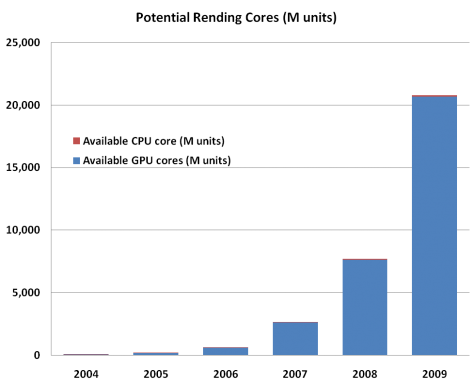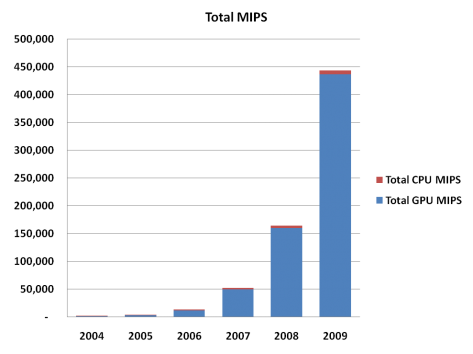In computer graphics, too much is not enough. Jon Peddie does some simple math on the ridiculous amount of computer power available for rendering.
By Jon Peddie
President, Jon Peddie Research
The number of processors, both x86 and GPU, available for rendering has been increasing exponentially. Rendering is one of the applications that can soak up all the cycles that are available to it, which is an example of Peddie’s First Law: In computer graphics, too much is not enough.
We looked at the installed base of x86 and GPU processors, applied a factor for the average number of cores and developed the following chart.

Cores alone don’t tell the whole story; the real measure is how many millions of operations per second the processor can execute. A general figure of merit is to multiple the processor’s clock by its word size. A GPU running at one-fourth the speed of a CPU, and with just a 32-bit processor compared to the 64-bit CPU, still deliver the most MIPS because of the overwhelming number of cores.

The chart indicates there is at least 450 billion computer cycles available every second. Carrying that to its ridiculous extreme, and assuming the processors run 24 hours a day, there are 38 quadrillion processor cycles available a day for rendering.
These computer cycles are almost free and they are going to be available just by the sheer momentum of the industry. They represent new opportunities and developments. Think about how fast and cheap rendering is going to be. Think about all the background functions that will done automatically and invisibly. It’s Peddie’s Third Law: the technology works when it’s invisible.





